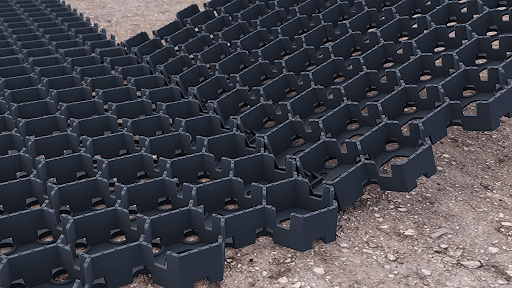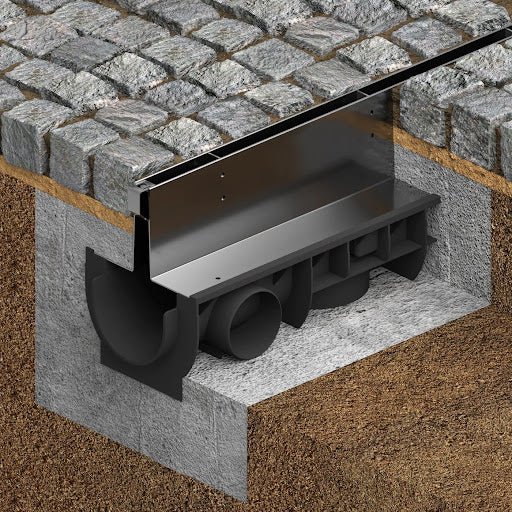When it comes to pavement materials, high traffic and heavy loading areas require the use of heavy duty pavers that can stand up to a serious amount of stress over time. Without them, roads and other paved structures run the risk of crumbling pavement under severe traffic and loading conditions – a pricey problem that also poses a lot of potential danger to drivers and the environment.
At Vodaland, we help project managers choose the right materials for the job, with an emphasis on structural durability and environmental responsibility. And to simplify the process of choosing appropriately strong paving materials for various types of projects, we’ve put together this quick overview of when heavy duty concrete pavers are a must, and why.
Materials for Low vs. Heavy Duty Paving
It’s important that the materials used in high traffic areas are different from those used in low traffic areas. So while the best pavers for driveway applications may sometimes be standard-mix asphalt and concrete, the same paving materials are less than ideal for holding up to heavy loads, high tire pressures, and consistently dense traffic.
For high traffic roadways, we recommend the use of heavy duty permeable pavers, which are optimized for use on high-stress roadways. Other areas where this type of material are useful include ramps, bus terminals, truck climbing lanes, and even parking lots and the immediate areas surrounding traffic lights – all of which are subject to regular braking and compound lateral strain. Permeable pavers can also be used on driveways, patios, and other residential areas.
These pavers have a few big advantages over traditional low-stress materials. This includes their utility at holding up under stressful loading conditions, as well as their use as an environmentally-friendly alternative to heavy duty asphalt mixes.
Things to Keep in Mind When Designing High Traffic Areas
Designing better roads is part of what we do here at Vodaland. And that requires careful consideration of all factors related to how a roadway will be used and how it will interact with its surrounding environment, plus general safety considerations.
For high traffic and heavy loading areas, even the smallest of details will make a huge difference in the efficacy of the design. In terms of pavement, that means relying on high-density options supported with the appropriate sub-base material.
Direct benefits of heavy duty permeable pavers include:
- Increased long-term durability
- Reduced lifecycle costs
- Ability to withstand high traffic and heavy loads without surface degradation
- Skid-resistance
- Can be optimized for unique climates (for example, light-colored pavers for high heat areas)
- Easier access to underground utilities
These and other key features of heavy duty pavers check off all of the necessary boxes for the design of high-traffic areas. And combined with other smart design choices like retroreflective borders and flexible barriers can result in areas that are safer for drivers and more likely to withstand the test of time.
For additional guidance on designing high-traffic areas, check out a heavy duty pavement design manual from your state or a relevant organization like the Interlocking Concrete Paver Institute. These manuals provide more insight on choosing the right materials for high traffic applications and can be an invaluable resource when making your roadway design plans.
Heavy Duty Paver Solutions from Vodaland
At Vodaland, we offer a curated selection of heavy duty permeable pavers for use in select areas, including parking lots, RV lots, aviation hangars, driveways, and more. Browse our site to learn about available options, or contact a Vodaland representative today for one-on-one support in choosing the right heavy duty pavers for your upcoming project.



Leave a comment
This site is protected by hCaptcha and the hCaptcha Privacy Policy and Terms of Service apply.